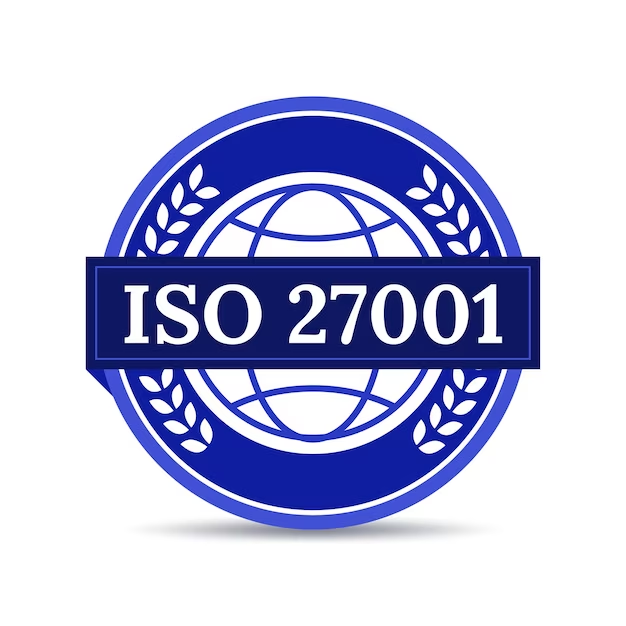I. Introduction
A. Overview of ISO 27001
ISO 27001 is the international standard for managing information security, setting out the best practices for establishing, implementing, maintaining, and improving an Information Security Management System (ISMS). This framework is designed to protect valuable data, including financial records, intellectual property, employee information, and third-party sensitive information. With ISO 27001, organizations can safeguard their data, ensuring confidentiality, integrity, and availability at all times.
B. Importance of Data Security in Today’s Digital World
In our increasingly digital world, the need for data security is more urgent than ever. Every organization, from small businesses to global enterprises, manages large volumes of sensitive data, ranging from customer details to trade secrets. As cyber threats, hacking, and data breaches rise, data security has become a top priority to protect this information and preserve trust.
C. The Role of ISO 27001 in Protecting Sensitive Information
ISO 27001 plays a pivotal role in providing organizations with a clear, structured approach to protecting sensitive data. By adopting the ISO 27001 standard, businesses can create a proactive framework to identify and mitigate risks, ensuring that security measures are always up to date with the latest threats. The standard emphasizes continuous improvement and risk management, adapting as security challenges evolve.
II. Understanding ISO 27001 Certification
A. What is ISO 27001?
ISO 27001 is an internationally recognized standard that helps organizations safeguard their data. The goal is to ensure that data remains confidential, maintains its integrity, and is readily available when needed. The standard is based on continuous risk management and improvement, focusing on the identification, assessment, and reduction of risks.
B. Key Components of ISO 27001
1. Information Security Policies
Organizations need clear security policies that outline how data will be protected. These policies assign responsibilities and guide employees on how to manage information securely.
2. Risk Assessment and Risk Treatment
Risk management is a cornerstone of ISO 27001. Businesses must assess potential risks, gauge their severity, and create treatment plans to either mitigate or eliminate those risks.
3. Security Controls
ISO 27001 includes 114 security controls across 14 domains, such as physical security, incident management, and access control. These controls work together to defend against a wide range of security threats.
4. Internal Audits and Continuous Monitoring
Regular internal audits ensure that the ISMS remains effective. By continuously monitoring security practices, organizations can spot and correct any weaknesses in their system.
5. Leadership and Employee Involvement
Management must be actively involved in ISO 27001 implementation. Leaders need to allocate the right resources, support security initiatives, and train employees on security policies.
6. Incident Management and Business Continuity
ISO 27001 requires organizations to have procedures for identifying and responding to security incidents like data breaches. It also emphasizes business continuity, ensuring that operations can continue even after an incident.
C. Why ISO 27001 Certification is Important for Organizations
1. Mitigating Security Risks
With cyber threats increasing, ISO 27001 provides a structured way to manage risks. The framework ensures organizations can handle potential vulnerabilities and prevent data breaches.
2. Compliance with Global Regulations
ISO 27001 certification helps businesses comply with strict data protection laws like GDPR. It aligns organizations with global regulatory requirements, reducing legal risks.
3. Enhancing Trust with Clients and Partners
ISO 27001 shows a commitment to data security, helping to build trust with clients, partners, and stakeholders. This trust can make a significant difference when negotiating contracts or entering new markets.
4. Improved Business Processes and Efficiency
ISO 27001 encourages streamlined processes, improving efficiency and security. It ensures that information security aligns with business goals, boosting overall organizational performance.
5. Global Recognition and Competitive Advantage
ISO 27001 certification is globally recognized. It sets businesses apart by demonstrating their commitment to information security, which can enhance their reputation and provide a competitive edge.
6. Promoting a Culture of Continuous Improvement
ISO 27001 encourages continuous improvement. As security threats evolve, organizations must adapt their practices, fostering a proactive approach to risk management and resilience.
III. Steps to Achieving ISO 27001 Certification
A. Conducting a Gap Analysis
The first step toward achieving ISO 27001 certification is conducting a comprehensive gap analysis. This process helps organizations assess their current information security practices and identify any gaps between their existing systems and the requirements set forth by ISO 27001. During a gap analysis, organizations review their policies, procedures, and controls to see where they fall short of ISO 27001 standards.
B. Developing an Information Security Management System (ISMS)
After identifying gaps, the next step is to develop the ISMS, the backbone of ISO 27001 certification. This system will guide the management of information security across the organization.
1. Defining Scope and Objectives
It’s important to define which parts of the organization will be included in the ISMS. Organizations should also set security objectives that align with their business goals.
2. Risk Assessment and Risk Treatment
A detailed risk assessment is essential to identify and treat potential threats. The goal is to reduce risks by implementing specific security controls.
3. Establishing Security Policies and Procedures
Clear security policies guide employees on how to protect data. Policies on access control, password management, and incident response are critical for maintaining security.
4. Selecting and Implementing Controls
ISO 27001 provides 114 security controls that organizations can choose from, depending on their specific risks. These controls can be physical, technical, or procedural.
5. Awareness and Training Programs
Training is key to successful implementation. Employees should understand their roles and responsibilities regarding information security and how to apply the established policies.
C. Internal Audit and Management Review
Before the external certification audit, an internal audit is necessary to check that the ISMS is effective and compliant.
1. Internal Audit
An internal audit allows the organization to review its processes, identify weaknesses, and make improvements before undergoing the formal certification audit.
D. Third-Party Certification Audit
Once internal audits and reviews are complete, organizations can undergo a third-party audit to achieve ISO 27001 certification.
1. Stage 1 Audit
The auditor reviews the organization’s ISMS documentation to assess its design and implementation. Any gaps must be addressed before moving on to the second audit stage.
2. Stage 2 Audit
The second stage involves an in-depth evaluation of the ISMS in practice, including interviews and assessments. If the organization passes, they receive ISO 27001 certification.
IV. Key Benefits of ISO 27001 Certification
A. Enhanced Data Security
One of the most significant advantages of obtaining ISO 27001 certification is the improvement in data security. In today’s digital world, organizations are increasingly vulnerable to cyberattacks, data breaches, and other security threats. ISO 27001 provides a robust framework for establishing, implementing, and maintaining an Information Security Management System (ISMS) that protects sensitive data.
B. Compliance with Legal and Regulatory Requirements
In many industries, legal and regulatory compliance is a critical factor in maintaining operations and avoiding costly penalties. ISO 27001 sertifikası helps organizations ensure they meet various legal, regulatory, and contractual obligations related to information security.
C. Building Customer Trust and Confidence
ISO 27001 certification is a powerful tool for building trust and confidence with customers, partners, and stakeholders. In an era where data breaches and cybersecurity incidents are commonplace, customers are increasingly concerned about how their personal and financial information is handled. By achieving ISO 27001 certification, organizations can demonstrate that they have implemented internationally recognized best practices for information security.
D. Improved Business Continuity and Risk Management
ISO 27001 is not only focused on protecting data but also on ensuring the continuity of business operations. One of the key components of the standard is risk management, which helps organizations identify, assess, and mitigate risks that could disrupt business processes. By implementing an effective ISMS, organizations can develop strategies for minimizing the impact of potential threats, such as cyberattacks, natural disasters, or system failures.
V. Common Challenges in ISO 27001 Implementation
A. Resource Allocation and Time Management
One of the primary challenges organizations face when implementing ISO 27001 is resource allocation. Establishing an Information Security Management System (ISMS) requires significant time, effort, and financial investment. The process of ISO 27001 implementation involves thorough planning and system changes, all of which require skilled personnel who understand the standard’s requirements.
B. Managing Employee Awareness and Participation
Another common challenge during ISO 27001 implementation is fostering employee awareness and participation. While management may understand the importance of achieving certification, it’s crucial that all employees are on board and understand their role in maintaining information security. Without active participation from the entire workforce, even the best-laid plans can fall short of achieving their desired outcomes.
C. Navigating the Complexity of Compliance
ISO 27001 is a detailed and comprehensive standard, which makes navigating its requirements one of the most significant challenges during implementation. Organizations must ensure they meet not only the core elements of the standard but also understand how ISO 27001 aligns with other regulatory frameworks that may apply to their industry.
VI. Tips for Successful ISO 27001 Certification
A. Involve All Departments
One of the most critical factors for a successful ISO 27001 certification is the involvement of all departments within the organization. Information security is not just the responsibility of the IT department; it spans across all business units. Every department, from human resources to finance and customer service, deals with sensitive data that requires protection.
B. Continuous Improvement and Monitoring
ISO 27001 is not a one-time certification; it requires ongoing effort to maintain compliance and effectiveness. Continuous improvement and monitoring are essential to ensure that your Information Security Management System (ISMS) remains relevant, robust, and adaptive to new security risks.
C. Seek Expert Guidance
Achieving ISO 27001 certification can be a complex process, and seeking expert guidance can significantly improve the chances of success. Engaging with ISO 27001 consultants, auditors, or specialists who are experienced in the standard can provide valuable insights and streamline the certification process. These experts can also offer tailored advice based on the organization’s specific needs, industry regulations, and risk profile.
VII. Conclusion
A. Recap of the Importance of ISO 27001 Certification
- Enhanced Information Security: ISO 27001 provides a robust framework for managing and protecting sensitive information, helping businesses mitigate risks such as data breaches, cyberattacks, and insider threats. It ensures that security measures are implemented systematically across the organization.
- Regulatory Compliance: By adhering to ISO 27001 standards, businesses can demonstrate their commitment to data protection and reduce the risk of fines, legal action, or reputational damage due to non-compliance.
- Increased Trust and Marketability: ISO 27001 certification signals to clients, partners, and stakeholders that a company prioritizes security and adheres to internationally recognized standards. This can enhance customer confidence, open doors to new business opportunities, and strengthen relationships with key partners who require stringent security measures.
- Risk Management and Continuous Improvement: This proactive approach ensures that businesses are always one step ahead of potential risks and threats, improving their overall resilience in the face of evolving cyber challenges.
- Business Growth and Competitiveness: As companies with ISO 27001 certification gain a competitive edge, they are better positioned to expand into new markets, attract high-value clients, and grow their business.
B. Encouragement to Start the Certification Journey
For businesses that have not yet embarked on the path to ISO 27001 certification, now is the time to act. The certification process may seem complex, but the long-term benefits far outweigh the initial investment of time and resources. By implementing ISO 27001, your organization not only strengthens its security posture but also enhances its reputation, attracts new customers, and ensures regulatory compliance.



More Stories
Legal Implications of Using a Virtual Office
7 Inspiring Startup Business Stories You Must Read
How To Remove Stains From Rugs Or Carpets